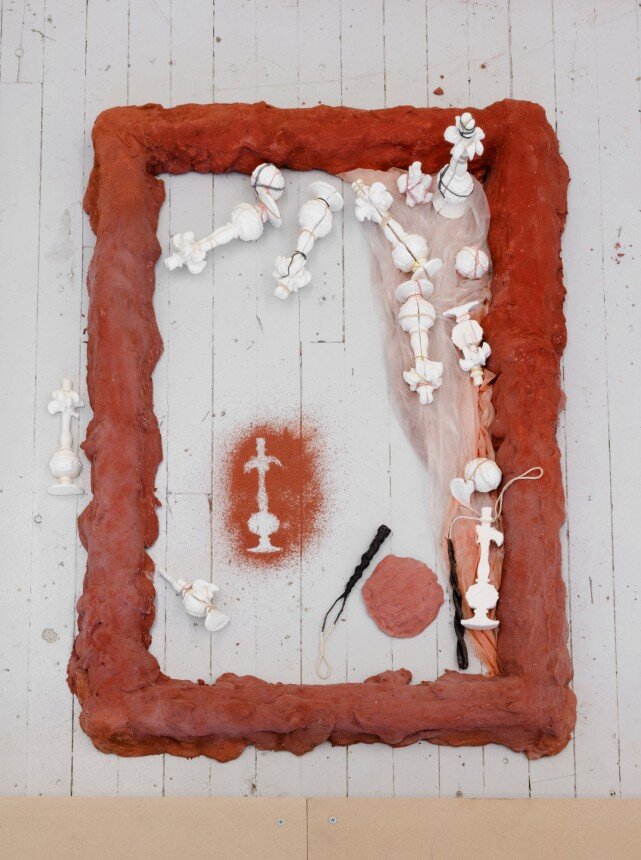Nadia Gohar
Mudstone
June 7–July 6, 2019
Opening: Friday, June 7, 6–8pm
Mudstone forms at the bottom of water bodies
Particularly in quiet situations
What is the fabric of the regions?
It takes material form in me
If you want to make something quick, just add water
Go play in the mud
If you remove something, I’ll know
It’s not spectacular, but it’s part of who I am
--
Mudstone is a solo exhibition by Nadia Gohar, a Cairo-born, Toronto-based multimedia artist. Gohar’s work explores themes of memory, identity and objecthood. Honing into the relationship between object and memory, and the idea that objects can act as an analogue for memory, her work follows the inquiry: are memories assigned to objects with hope that the object’s durability will prolong its life, through which, preserve our identities?
Evidenced by our fascination with restoring, archiving and documenting, memory is a major social investment. Museology dictates historical narratives through its curation of ‘artifacts’. Throughout her work, Gohar has examined the purpose of an ‘artifact’, and why certain objects are given merit and elected as ambassadors for periods of life. Mudstone is an exploration of the objects unpreserved and disintegrated; those which have yet to take material form as something ‘other’. Scattered throughout the exhibition are casts, negative casts and imprints. A date stem, or a plaster cast of a palm-shaped incense bottle wrapped in rubber bands, first appear mundane, but they call towards the production and byproducts of a cultural identity.
At the centre of the gallery, Gohar has constructed a pit that spans the sides of the gallery walls. Modelled after archaeological remains of foundation deposits—ritual relics buried beneath architectural foundations in Ancient Egypt—three sculptures sit within it, all set in a frame of pigmented concrete. Concrete, because of its tendency to make everything universally the same, is often accused of erasing memory. And yet, it is the most commonly used material for building monuments and memory sites. Gohar's work is an exploration into the properties of concrete as a medium and how to alter its appearance by dyeing and manipulating it to mimic the characteristics of clay or mud.
Surrounding the pit are three paintings of water and a flowing mobile made primarily of fabric, suspended from the ceiling. Water is a key element in Gohar’s work as it harkens to the flow of people, and cultural objects, displaced through the process of migration.
Nadia Gohar (b. 1989, Cairo, Egypt) received a BFA from the Massachusetts College of Art & Design in 2012. She has exhibited at the Queens Museum, Queens, SOIL Gallery, Seattle, Sleep Centre, New York, Samson Projects, Boston, USA; The Table, Little Sister Gallery, Artscape Youngplace, Project Gallery, Toronto, Canada; AWAN, London, UK; Libreria Cascianelli, Rome, Italy. Image List
With thanks to the generous support of the Toronto Arts Council & the Ontario Arts Council









